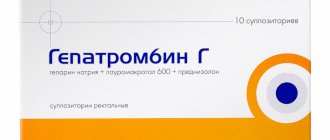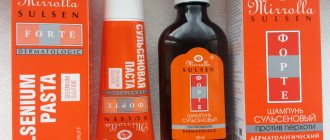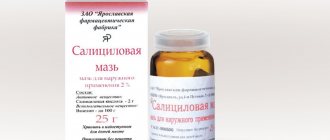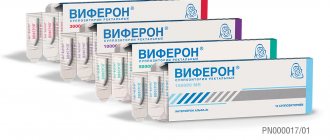Compound
The active substance is metoclopramide hydrochloride monohydrate .
1 tablet contains 10.54 mg of this substance, which in terms of metoclopramide hydrochloride is 10 mg.
Additional substances are: silicon dioxide, potato starch, gelatin, magnesium stearate and lactose monohydrate.
1 ml of solution contains 5 mg of metoclopramide hydrochloride . Additional substances are: disodium edetate, injection water, sodium sulfite, sodium chloride.
Special instructions for the use of the drug Cerucal
Impact on the ability to drive vehicles. Even when taken as recommended, metoclopramide may significantly impair reaction time and the ability to drive or operate potentially dangerous machinery. This effect is especially pronounced with the simultaneous use of alcohol. Due to the content of sodium sulfite in the Cerucal injection solution, in some cases, mainly in patients with asthma, hypersensitivity reactions to the drug may occur, which are manifested by nausea, diarrhea, shortness of breath, an acute attack of asthma, impaired consciousness or anaphylactic shock. The severity of these reactions is purely individual; in some cases they can pose a threat to the patient’s life.
Pharmacodynamics and pharmacokinetics
The active ingredient is metoclopramide . The main substance is a blocker of serotonin and dopamine receptors. Cerucal eliminates hiccups , heartburn , accelerates gastric emptying, tones the lower sphincter of the esophagus, significantly reduces and slows down the motor activity of the esophagus, does not cause diarrhea, and accelerates the movement of food through the small intestine. The drug stimulates the release of prolactin .
After intravenous administration, the effect of the drug is felt after 1-3 minutes, when administered intramuscularly - after 10-15 minutes. The drug is metabolized in the liver. About 20% is excreted in its original state and about 80% by metabolites.
Pharmacological properties of the drug Cerucal
Pharmacodynamics. A blocker of dopamine and serotonin receptors, inhibits chemoreceptors in the brain, weakens the sensitivity of the visceral nerves that transmit impulses from the pylorus and duodenum to the vomiting center. Through the hypothalamus and parasympathetic division of the autonomic nervous system, it regulates and coordinates the motor activity of the upper digestive tract. Increases the tone of the stomach and intestines, accelerates gastric emptying, reduces gastrostasis, prevents pyloric and esophageal reflux, stimulates intestinal motility. It has an antiemetic effect against vomiting of various origins (except for vomiting of a psychogenic and vestibular nature). Normalizes bile secretion, reduces spasm of the sphincter of Oddi, does not change its tone, eliminates dyskinesia of the gallbladder. Pharmacokinetics. Quickly and completely absorbed after oral administration. The maximum concentration in blood plasma is achieved 30–120 minutes after administration. The onset of action on the digestive tract is observed 20–40 minutes after ingestion. The antiemetic effect persists for 12 hours. 13–30% of metoproclamide is bound to plasma proteins. Volume of distribution - 3.5 l/kg. Metabolized in the liver. The half-life is 4–6 hours. Over 24–72 hours, up to 80% of the administered dose is excreted in the urine, about 30% unchanged. Penetrates through the BBB and placental barrier, excreted in breast milk. With intravenous administration, the onset of action on the digestive tract is noted after 1-3 minutes, with intramuscular administration - after 10-15 minutes.
Indications for use of Cerucal
What are tablets and ampoules for?
The medicine is prescribed for hiccups, vomiting, hypotension and atony of the intestines, stomach, reflux esophagitis , biliary dyskinesia, exacerbation of ulcerative lesions of the digestive system, flatulence. What other indications exist for the use of Cerucal? To enhance peristalsis, the drug is used during X-ray contrast studies of the digestive tract.
Contraindications
Cerucal is not prescribed for bleeding in the digestive system, metoclopramide intolerance, pheochromocytoma , intestinal and gastric perforation, mechanical intestinal obstruction, pyloric stenosis , epilepsy, extrapyramidal disorders, in the presence of prolactin-dependent tumors, Parkinson's disease. For arterial hypertension, bronchial asthma, kidney and liver pathologies, in pediatrics it is prescribed with caution.
Who is Cerucal indicated for?
Prescriptions of the drug include digestive disorders accompanied by nausea, as well as vomiting attacks caused by various reasons:
- gastric paresis;
- functional pyloric stenosis;
- dyspepsia, heartburn;
- irritable bowel syndrome, flatulence;
- gallbladder dyskinesia;
- liver dysfunction;
- late toxicosis of pregnancy;
- migraine;
- traumatic brain injuries
Cerucal is effective in eliminating nausea caused by taking medications. It is prescribed as a prophylaxis against vomiting before diagnostic procedures, including gastroscopy.
Side effects
Cerucal can cause the following side effects: diarrhea , constipation , drowsiness, dizziness, dry mouth, depression. Long-term use of high doses by elderly people causes gynecomastia, dyskinesia , parkinsonism, and galactorrhea. In case of overdose, extrapyramidal disorders , disorientation , and hypersomnia are recorded. After discontinuation of the drug, the symptoms disappear within a day.
Side effects of the drug Cerucal
Rarely, mainly when metoclopramide is used in higher doses, patients may experience fatigue, headache, dizziness, fear, anxiety and diarrhea. In some cases, mainly in children, dyskinetic syndrome (involuntary tic-like twitching of the muscles of the face, neck or shoulders) may develop. After discontinuation of the drug, these phenomena weaken within a few hours; it is possible to immediately eliminate them with the intravenous administration of biperiden (the manufacturer’s recommendations should be taken into account). For sedation, administration of diazepam is indicated. After prolonged treatment with metoclopramide, some elderly patients developed parkinsonism (tremor, muscle twitching, limited mobility) and tardive dyskinesia. After longer use of the drug, occasionally, due to stimulation of prolactin secretion, gynecomastia in men, galactorrhea or menstrual irregularities may occur; If these phenomena develop, stop taking metoclopramide. In adolescents and patients with severe renal impairment, the occurrence of side effects should be especially carefully monitored, and if they develop, the drug should be stopped immediately.
Instructions for use of Cerucal (Method and dosage)
Cerucal tablets, instructions for use
The drug is taken orally 30 minutes before meals three times a day, 5-10 mg. It is recommended to take the tablet with a large volume of liquid. The maximum daily dose is 60 mg, single dose is 20 mg.
Cerucal injections, instructions for use
Adults and from 14 years of age are administered intramuscularly or slowly intravenously, one ampoule 1-3 per day.
Children from 2 to 14 years old need to be given injections at the rate of 0.1 mg/kg, the maximum permissible dose per day is 0.5 mg/kg.
What is Cerucal: composition and dosage forms
The active component of the drug is metoclopramide hydrochloride. This is a selective blocker of dopamine receptors that inhibits the activity of the vomiting center. The medication is available in two forms: for oral use and injection. Pharmaceutical forms:
- Tablets: white, uncoated, dosage 10 mg, packaged in blisters or plastic containers. Excipients: magnesium stearate, lactose, starch, silicon dioxide, gelatin.
- Solution for parenteral administration in glass ampoules. One dose: 1 ml contains 5 mg metoclopramide hydrochloride, distilled water, sodium chloride.
The instructions for use of Cerucal indicate that it blocks nerve impulses from the duodenum to the brain, thereby reducing nausea and preventing reverse peristalsis.
Overdose
The following phenomena are observed: hallucinations, drowsiness, irritability, convulsions, decreased level of consciousness and confusion, arrest of respiratory and cardiac activity, anxiety, extrapyramidal disorders, dysfunction of the cardiovascular system, dystonic reactions.
In case of overdose, symptomatic treatment should be used.
Compatibility of Cerucal with other medications and alcohol
The drug is not advisable to use during treatment with antipsychotics. This increases the risk of extrapyramidal disorders. The active substance of the drug accelerates the absorption of ascorbic acid, paracetamol, and tetracycline antibiotics. Cerucal promotes the destruction of vitamin B1 in the body and slows down the absorption of cimetidine and digoxin.
The product must not be taken simultaneously with alcoholic beverages or while intoxicated. Violation is fraught with the development of acute intoxication: confusion, impaired coordination of movements, vascular collapse.
During treatment with the drug, you should avoid driving vehicles and work that requires rapid psychomotor reactions.
Interaction
Anticholinesterase drugs weaken the effect of metoclopramide. Cerucal increases the absorption of paracetamol, ampicillin , tetracycline, ethanol, levodopa , ascorbic acid. The drug reduces the absorption of cimetidine and digoxin. The simultaneous administration of antipsychotics (the risk of developing extrapyramidal disorders increases).
Interactions of the drug Cerucal
Anticholinergics may reduce the effect of metoclopramide. Metoclopramide may interfere with the absorption of other drugs. On the one hand, there may be a slowdown in the absorption of digoxin and cimetidine, on the other hand, an acceleration in the absorption of antibiotics, paracetamol and alcohol. In addition, metoclopramide may enhance the effects of alcohol and sedatives. In order to prevent a possible increase in the severity of extrapyramidal disorders, antipsychotics should not be prescribed simultaneously with metoclopramide. Metoclopramide may interfere with the action of tricyclic antidepressants, MAO inhibitors and sympathomimetic agents. Due to the content of sodium sulfite in the injection solution, thiamine (vitamin B1), taken simultaneously with Cerucal, can be quickly broken down in the body.
special instructions
According to the annotation, in some cases it is recommended to additionally use antiparkinsonian drugs, central anticholinergic blockers . It is unacceptable to consume ethanol during treatment with Cerucal. The drug affects the performance of complex activities, driving a car.
INN: Metoclopramide.
The medicine is used in veterinary medicine for cats and dogs.
Recipe in Latin:
Rp: Tab. Metoclopramidi (Cerucali) 0.01 DS 1 tab. 3 times a day before meals
Analogues of Cerucal
Level 4 ATX code matches:
Passazhix
Motinorm
Domrid
Motilium
Itomed
Metoclopramide
Domperidone
Motilak
Ganaton
Analogues of the drug are Metoclopramide , Metukal .
Cerucal price, where to buy
The price of Cerucal in 10 mg tablets is 125 rubles for 50 pieces. The cost in Ukraine is 130 hryvnia.
The price of Cerucal in ampoules of 2 ml is 230 rubles for 10 pieces.
- Online pharmacies in RussiaRussia
- Online pharmacies in UkraineUkraine
- Online pharmacies in KazakhstanKazakhstan
ZdravCity
- Cerucal tablets 10 mg 50 pcs. Pliva Hrvatska d.o.o
102 rub. order
Pharmacy Dialogue
- Cerucal (tab. 10 mg No. 50)Pliva
109 rub. order
- Cerucal ampoules 10mg 2ml No. 10Merckle GmbH
RUB 215 order
show more
Pharmacy24
- Cerucal 10 mg 2 ml N10 solution for injection Merkle GmbH, Nimechchina
458 UAH.order - Cerucal 10 mg No. 50 tablets Pliva Hrvatska d.o.o., Croatia
260 UAH order
PaniPharmacy
- Cerucal ampoule Cerucal solution d/in. 10mg amp. 2ml No. 10 Hungary, Teva
441 UAH order
- Cerucal tablets Cerucal tablets. 10 mg No. 50 Croatia, Pliva
258 UAH. order
show more






